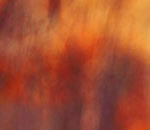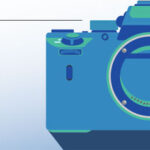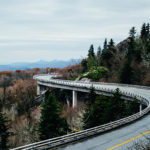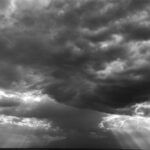We all have an inner street photographer, whether it be a hidden urge or a full-blown passion. In this Nikon-sponsored video, documentary photographer Nina Berman discusses her approach, on the roads and avenues of New York City, to this style which demands so much instinct, quickness, and versatility:
For a long time, Nikon has been gearing their cameras towards this type of photography by focusing their development on high ISO performance, wide dynamic range, and ever more compact bodies. True to the essence of street photography itself, Berman focuses her project on “speed”. In doing so, she seeks out swift motion and energy, but also embeds her theme on her method of shooting – very immediate and intuitive, often not even using the viewfinder, shooting blindly or from the hip.
These are tried and true techniques for shooting streets; firing without framing leaves your images wide open to absorb amazing slices of life that often elude the more inquisitive eye. Viewing your images without any idea what you’ve taken allows you to look at your own work with the virgin eye of the viewer, without preconception.
Conventional wisdom says that the act of observing changes that which is being observed. Great street photography is truly unique when it succeeds in capturing a moment before it can be altered – the moment is lost if your subject notices the camera and adjusts their manner accordingly. The tiny, scarcely noticeable size of the Nikon 1 V2 and other similarly-sized cameras gives the freedom of a low profile and the ability to be very incognito.
Legendary street photographer Henri Cartier-Bresson used a rangefinder, which was a similar sort of idea, for its day – highly compact but excellent quality and very customizable. His contemporaries reported that nobody knew when he took a photograph; he would raise the camera to his face and back down again, as if deciding not to take the picture after all. Mastery of speed and dexterity, combined with a keen eye, ushered him into the royalty of photographic giants.
Next time you go out to shoot streets, remember these few basic tips:
- Be fast, be on your toes.
- Get up high and down low.
- Take a small camera. Blend into the scenery.
- Keep your eyes open; look behind you often.
- Shoot now, think later.
“If you want to start doing street photography, the first thing is you have to realize that there’s no perfect picture, so when you go out there and start walking around and wandering, and you’re thinking, “What is it that I’m looking for? What picture am I here for?”, don’t worry!”
Like This Article?
Don't Miss The Next One!
Join over 100,000 photographers of all experience levels who receive our free photography tips and articles to stay current:






@Gary, check this: ”Consent required for action related to a picture of a person in a public place (by country)” https://commons.wikimedia.org/wiki/Commons:Country_specific_consent_requirements
First of all, there is no legal requirement to obtain permission to photograph people in a public place, as there is no reasonable expectation of privacy in a public place. Beyond that, one may use a photo of anyone, taken in public, for non-commercial purposes without permission. It’s when the photographer wants to use the image for commercial uses that he must have a model release from the subject.
By the way, Cartier-Bresson use a Leica.
Take pictures on the street is mostly interesting, but a picture of persons can’t not be use or post anywhere You need the the written (!?) permission before publishing. Different law in different places or country.
With all due respect, I don’t think Nina Berman knows what she’s doing, as a street photographer. The idea is to blend in and become inconspicuous. You’re trying to capture candid photos of people. What she is doing only draws attention to herself. You don’t walk around with a camera to your eye and you don’t do so while doing squats, either. If she wants to get low-angle shots, she needs to develop the skill for shooting from the hip or from chest height and not composing her shots like she would in other genres of photography. Use a short wide-angle lens and not a lens that is six inches long. Cartier-Bresson looked for interesting scenes and staked them out, waiting as long as it took for someone to walk into the scene before he tripped the shutter. In that way, one can remain more or less stationary and people don’t notice you as much as they do when you’re walking around looking like an idiot with a camera to your face doing deep knee bends.
+1